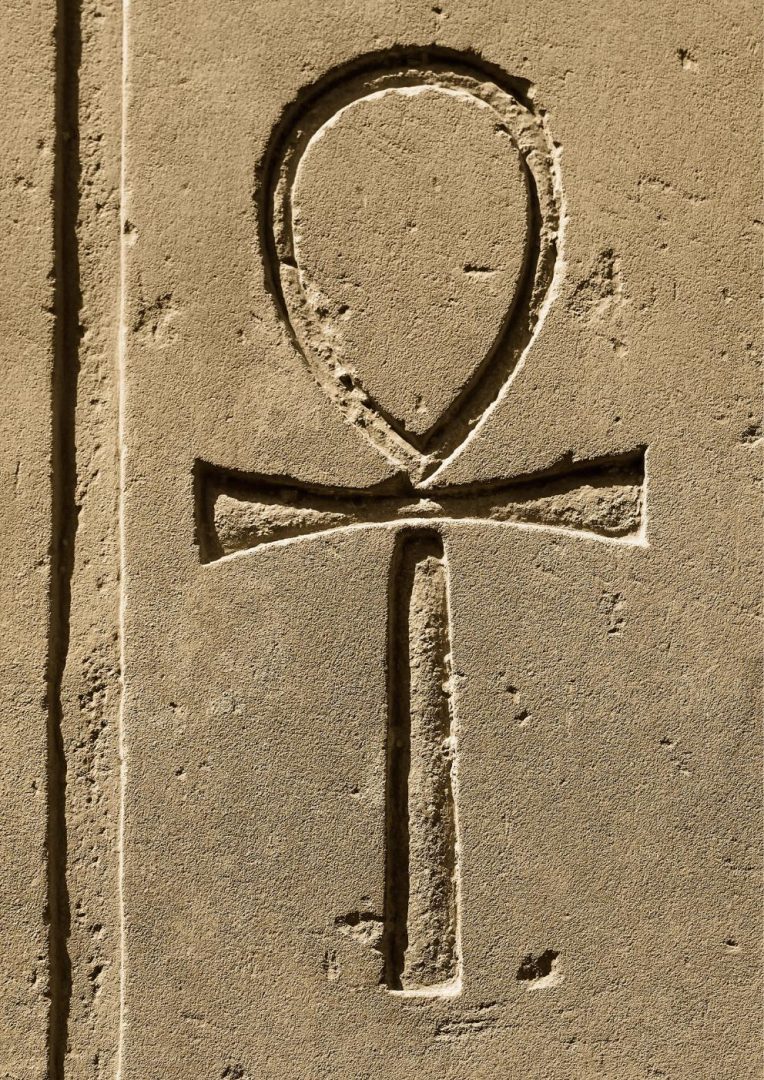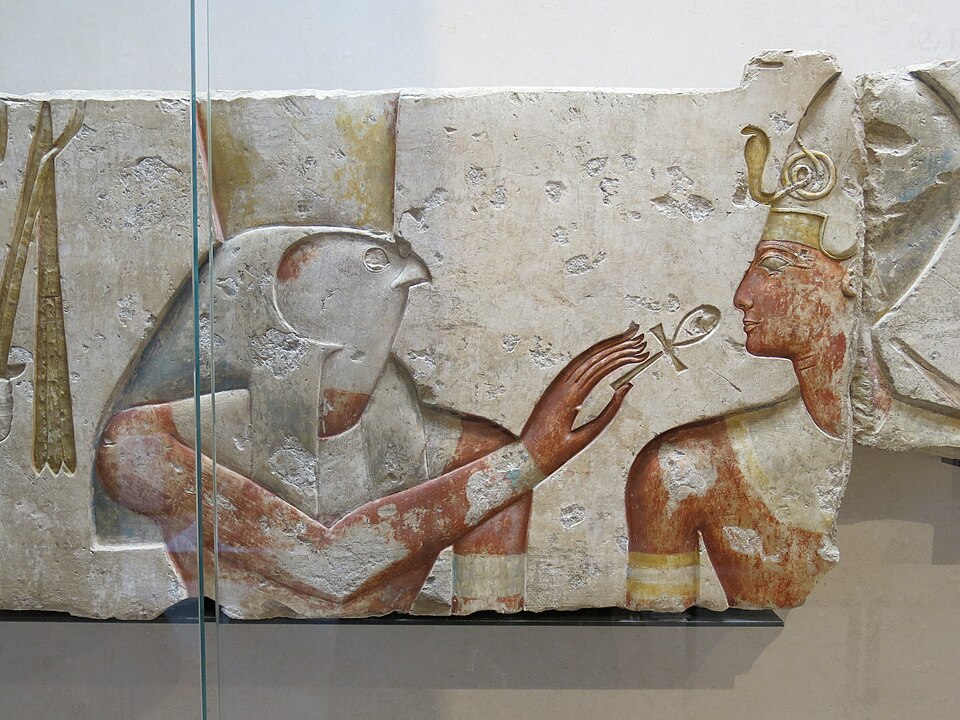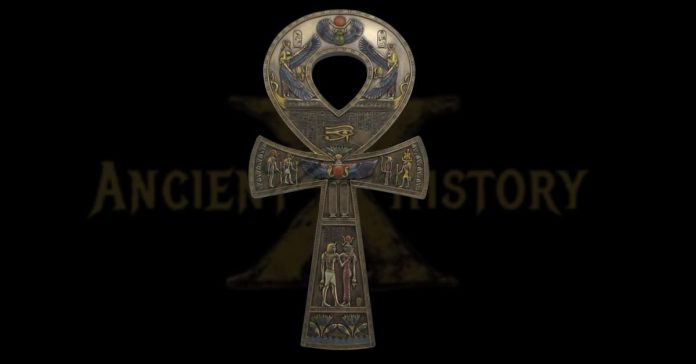The Ankh (☥), one of Ancient Egypt’s most iconic symbols, carries profound spiritual, cosmological, and cultural meanings. Known as the “Key of Life” or “Key of the Nile,” this cruciform symbol with a looped top played a central role in Egyptian iconography, religious rituals, and metaphysical philosophy. Below is an exploration of its significance, interpretations, and enduring mysteries.
Ankh Symbolism in Egypt: The Cosmic Dance of Sun and Horizon
The Ankh’s form is deeply tied to solar and celestial imagery. Its loop represents the sun, while the horizontal bar symbolizes the horizon, and the vertical line signifies the sun’s ascent above it. This configuration encapsulates the daily rebirth of the sun, a metaphor for eternal life and cyclical renewal. The Ankh thus serves as a visual hymn to the sun’s journey, linking it to creation myths where solar deities like Ra dominate. Contrary to modern associations of the cross as solely Christian, the Ankh underscores the cross’s ancient, universal roots in cosmic symbolism.

The Nile’s Sacred Key: Ankh as the Lifeline of Egyptian Civilization
The Ankh’s profound connection to the Nile River is not merely symbolic but foundational to understanding its role in ancient Egyptian cosmology and daily life. Referred to as the “Key of the Nile” (𓋹), the Ankh’s form is widely interpreted as a stylized representation of the river’s life-sustaining geography. The loop at its apex mirrors the Nile Delta, a sprawling, fertile fan-shaped region where the river branches into distributaries before emptying into the Mediterranean Sea. The horizontal bar beneath the loop evokes the intersecting waterways and irrigation channels that crisscrossed the delta, while the vertical line symbolizes the Nile’s unidirectional flow from its southern origins in Upper Egypt to the northern delta. This tripartite structure encapsulates the river’s role as both a physical and metaphysical axis, binding the land’s fertility to the rhythms of divine order (ma’at) .
Union of Opposites: Isis, Osiris, and Cosmic Harmony
The Ankh’s symbolic potency as a mediator of dualities is perhaps most vividly embodied in its association with the divine union of Isis and Osiris, whose mythic narrative encapsulates the interplay of creation, destruction, and regeneration. This sacred couple, central to Egyptian cosmology, personifies the fusion of male and female principles, transcending mere gender roles to represent universal forces: Osiris, the god of resurrection, fertility, and cyclical renewal, and Isis, the goddess of magic, protection, and maternal nurturing. Their union, both literal and metaphorical, mirrors the Ankh’s function as a harmonizer of opposites, binding life and death, earth and sky, order and chaos into a cohesive cosmic whole.
The Osirian Myth: A Framework for Cosmic Balance
The myth of Osiris’s murder by his brother Set and subsequent resurrection by Isis is foundational to understanding the Ankh’s role in Egyptian theology. After Osiris’s dismemberment, Isis meticulously gathered his scattered body parts, using her unparalleled magical prowess to temporarily restore his vitality—a act symbolizing the triumph of order (ma’at) over chaos (isfet). The Ankh, often depicted in Isis’s hand during this resurrection, served as both a tool and a metaphor for her life-giving power. In the Coffin Texts, Isis declares, “I unite the fragments of Osiris with the breath of the Ankh,” underscoring the symbol’s role in bridging mortal fragmentation with divine wholeness. This mythic cycle of death and rebirth, mirrored in the Nile’s annual inundation and the agricultural seasons, positioned the Ankh as a perpetual emblem of nature’s regenerative cycles.
Beyond Life and the Afterlife

The Ankh’s significance reaches into themes of death and rebirth. Ancient Egyptians placed it in tombs to represent the soul’s journey through reincarnation and its eventual union with the gods. Artists often depicted pharaohs holding the Ankh to their lips, symbolizing the “breath of life” sustaining them in the afterlife. Serving as a “key,” the Ankh was also believed to unlock the gates of Duat (the underworld), granting access to eternal realms. This dual role—signifying both physical vitality and spiritual transcendence—solidified its status as a holistic symbol of existence.
Esoteric Interpretations and Mysteries
The Ankh’s enigmatic origins have spurred diverse theories:
- Frequency Modulator: Some esoteric traditions suggest it functioned as a tool for channeling cosmic energy or sound frequencies, though this lacks archaeological evidence.
- Mirror Symbolism: Its loop resembles handheld mirrors used in rituals, possibly representing self-reflection or clairvoyance.
- Anatomical Links: Hypotheses link the Ankh to the thoracic vertebrae of a bull, an animal sacred to Osiris, symbolizing strength and resurrection.
- Tree of Life: Its form parallels the Axis Mundi, connecting earthly and celestial realms, akin to other global “world tree” motifs.
Despite these interpretations, Egyptologists remain divided on its precise origin, with no single hypothesis universally accepted.
Ritual and Protective Roles
In temple art, the Ankh was inscribed in masse on walls to invoke divine protection. Initiates of the Isis Mysteries carried it as a mark of esoteric knowledge, symbolizing their ability to mediate between seen and unseen worlds. Its use in amulets and ceremonial objects further highlights its apotropaic function, guarding against malevolent forces.
Conclusion: An Enduring Enigma
The Ankh’s legacy endures in modern spirituality, pop culture, and art, while its ancient origins remain mysterious. Whether as a solar emblem, Nilotic metaphor, or key to immortality, the Ankh embodies the Egyptians’ intricate blend of cosmology, theology, and philosophy. As research progresses, it continues to stand as a testament to humanity’s quest to decipher the symbols linking life, death, and the infinite.

